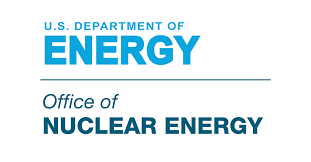Part 1 of 2 Parts
One of the biggests problems with the use of nuclear fusion to generate electricity is the generation of radioactive spent nuclear fuel waste. Nuclear power plants in the U.S. generate about two thousand metric tons of spent fuel every year. Because it is highly radioactive, the waste is stored at various sites around the country. The federal government has the authority to decide what to do with the spent nuclear fuel.
A special fund was established by the government in 1989. It was called the Nuclear Waste Fund (NWF) and all nuclear power plant owners in the U.S. were required to pay into the NWF to provide money for a national spent nuclear fuel waste disposal repository to be opened in 1999. A total of forty billion dollars has been deposited in that fund.
Originally, a “deep geological repository” under Yucca Mountain in Nevada was going to be constructed to hold the spent nuclear fuel waste generated by U.S. power reactors but this proved to be polically impossible with serious resistance from Nevada state officials as well some members of the Obama administration. Fifteen billiion dollars were spent on Yucca Mountrain before the effort was abandoned in 2009.
Due to the inability of the U.S. Department of Energy (DoE) to successfully dispose of this spent nuclear fuel as promised, it has just been steadily accumulating. The latest figures released by the DoE say that about eighty thousand tons of spent nuclear fuel is waiting for a final disposal site to be constructed in the U.S.
Some of the nuclear power plant operators sued the U.S. government in 2013 for failure to fulfill the obligation to dispose of the spent nuclear fuel. Every year, several hundred million dollars is now paid out to them each year by the U.S. Treasury as part of the series of settlements and judgements. To date, about eight billion dollars has been paid to nuclear plant owners.
All of the aggregated nuclear waste in the U.S. takes up a relatively small volume and temporary storage sites exist in addition to storage onsite at the nuclear power plants. There is no pressing need to do anything immediately and, therefore, policity makers feel no need to expedite the creation of a permanent geological storage facility for spent nuclear fuel. Work on a repository continues but 2050 is the ealiest projected date for such a repository to be completed and put into operation.
There are some nuclear experts who believe that some of this radioactive waste could be recycled into usabable fuel for nuclear reactors. This is an old concept, stimulated by the fact that only a small proportion of radioactrive materials are burned in a nuclear reactor before the fuel must be replaced. (Some estimates place the percentage of burned fuel as low as ten percent.) Proponents of fuel recycling iare working on nuclear reactors that are specially designed to use “reprocessed nuclear fuel”. Even critics of this idea will admit that the chemistry, physics, engineering of nuclear fuel recycling appear to be technically feasible. The critics focus on the disputable economics and perceived security risks.
Please read Part 2 next
